Purple martins are iridescent beautiful birds known for their speed, agility, and insect-eating habits. Not truly purple, they have a deep blue plumage that shimmers in the light. In certain angles, they can appear purple or even green. Today, we will learn all about these attractive and agile birds and go over some of the best ways to attract purple martins to your yard.
About Purple Martins
They are the largest swallow species in North America. Purple martins are often sought after for backyards, not only for their beauty and cheerful song but because they will eat thousands of insects in one day.
According to the National Audubon Society, these fascinating birds are declining in population. Experts aren’t sure why, although they think it may be due to European starlings competing for nesting sites.
Purple martins spend their winters far away in the Amazon Basin in South America. They return to the United States in early spring (February in the south and April to May in the west) looking for nesting sites. They will come back each year to the same nesting site. You can help purple martins by offering nesting sites in your backyard, and in return, you will be rewarded with a bird that eats a surplus of your garden pests. Even better, they don’t eat birdseed, so you won’t need to feed them.
The History of Purple Martin Housing

Purple martins love to nest in gourds.
©Jean Faucett/Shutterstock.com
People have long been providing nests for purple martins. Native American tribes used to hang hollow gourds around their villages to dry. They found that the dried gourd attracted purple martins, who nested inside. The Native Americans left the gourds hanging to let the birds live in them.
Today, purple martins still prefer manmade houses for nesting. Read on for 9 tips on how to attract purple martins to your yard.
1. Install The Perfect Nest Box for Purple Martins
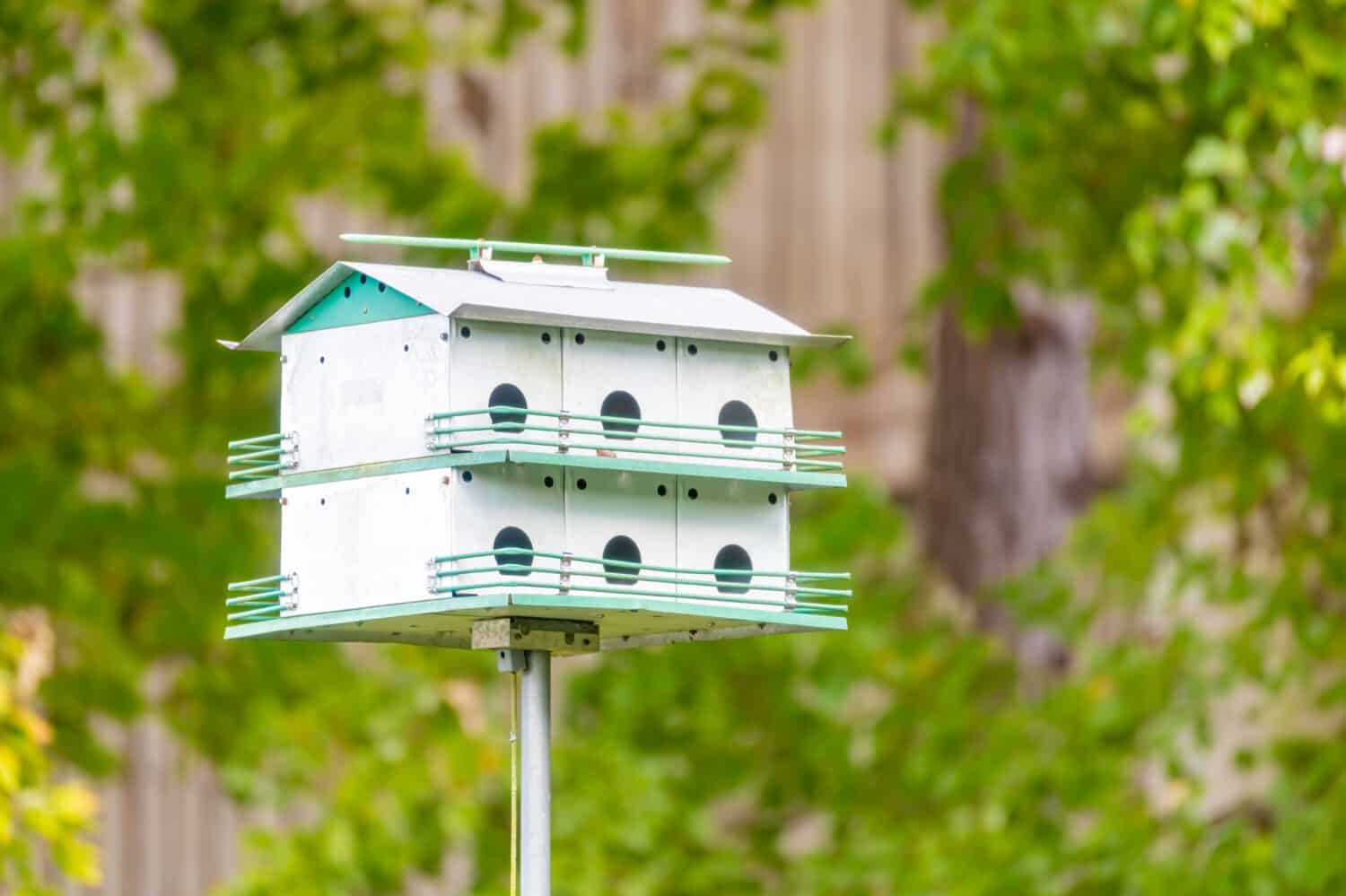
An aluminum nest box is preferable to wood because it has to sit high in the air, and wood tends to get too heavy. A white house will keep it cooler on the inside.
©Terry Kelly/Shutterstock.com
In the West, purple martins will next inside woodpecker holes, or even giant cacti. But in the East, they are almost entirely reliant on manmade nest boxes. Purple martins are colony nesters, meaning they will only nest together in groups, so their nest boxes must be able to house multiple birds.
According to the Purple Martin Conservation Association, purple martin houses should have at least four cavities, but 6 to 12 is a good amount to lure a colony to your yard.
There are two types of nests to choose from:
- Apartment-style house with at least 12 compartments.
- Gourd house – Purple martins will also nest in groups of gourds. Most are sold in packs of at least four.
Look for white nest boxes, the color will deflect the heat of the sun, and the entrance will look darker to the birds, helping them to notice the entrance hole.
2. Install the Purple Martin Nest Box in the Right Place
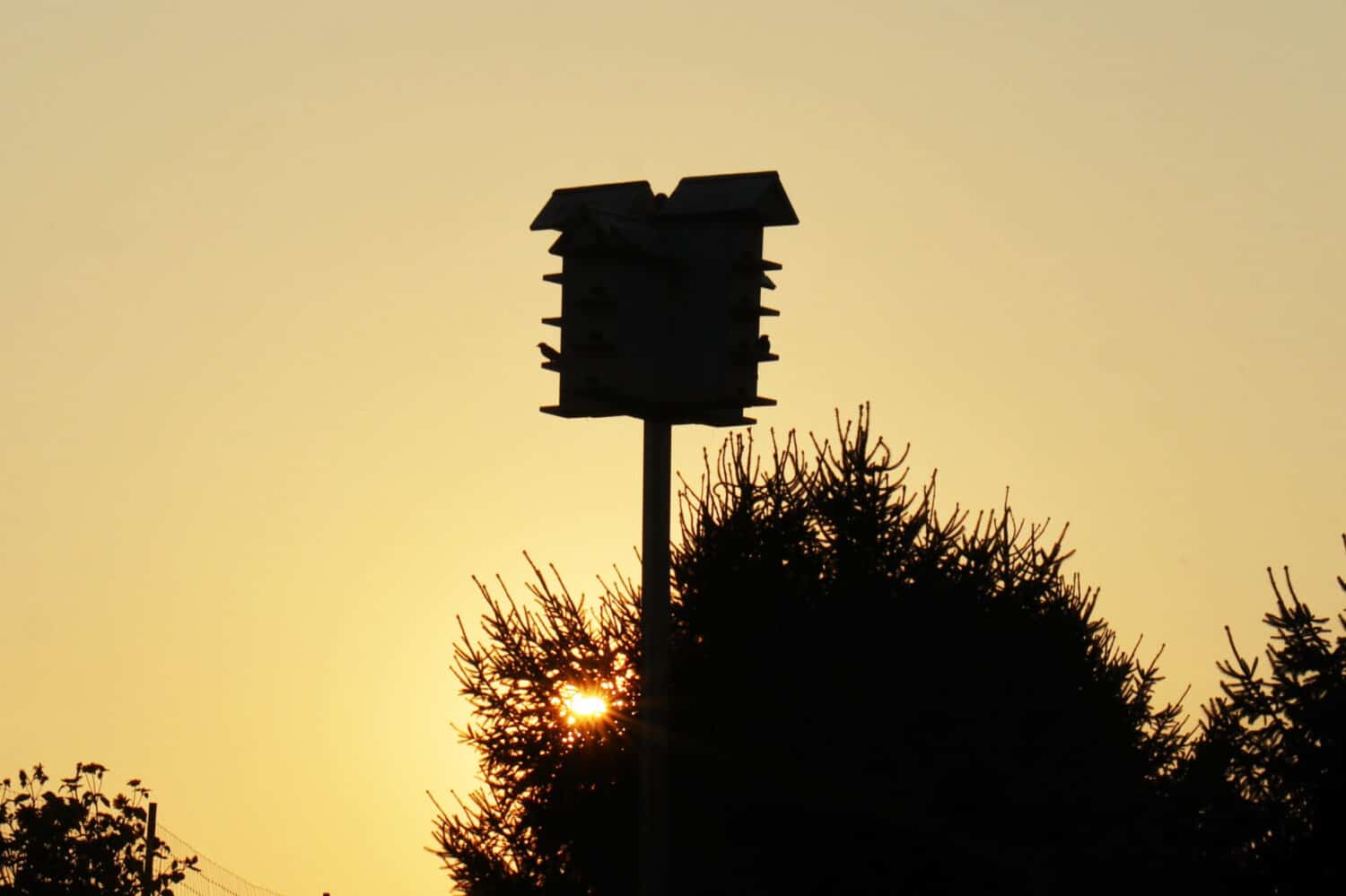
The nest box should be about 12 to 15 feet in the air with plenty of clearance for the birds to fly directly into the entrance.
©Jarvis Shirky/Shutterstock.com
Install the nest boxes 12 to 15 feet in the air. They also should be about 100 feet clear from other structures or trees. The birds need space to fly into and out of their homes. Although they need to be far enough away from structures, they shouldn’t be too far. Purple martins have learned they are safe near people because predators will stay away. They are most likely to inhabit a nest that is not too far from human activity. It’s best to place the nest boxes in open areas, away from shrubs and dense undergrowth because the birds are wary of predators.
3. Add Open Perches Around Your Yard
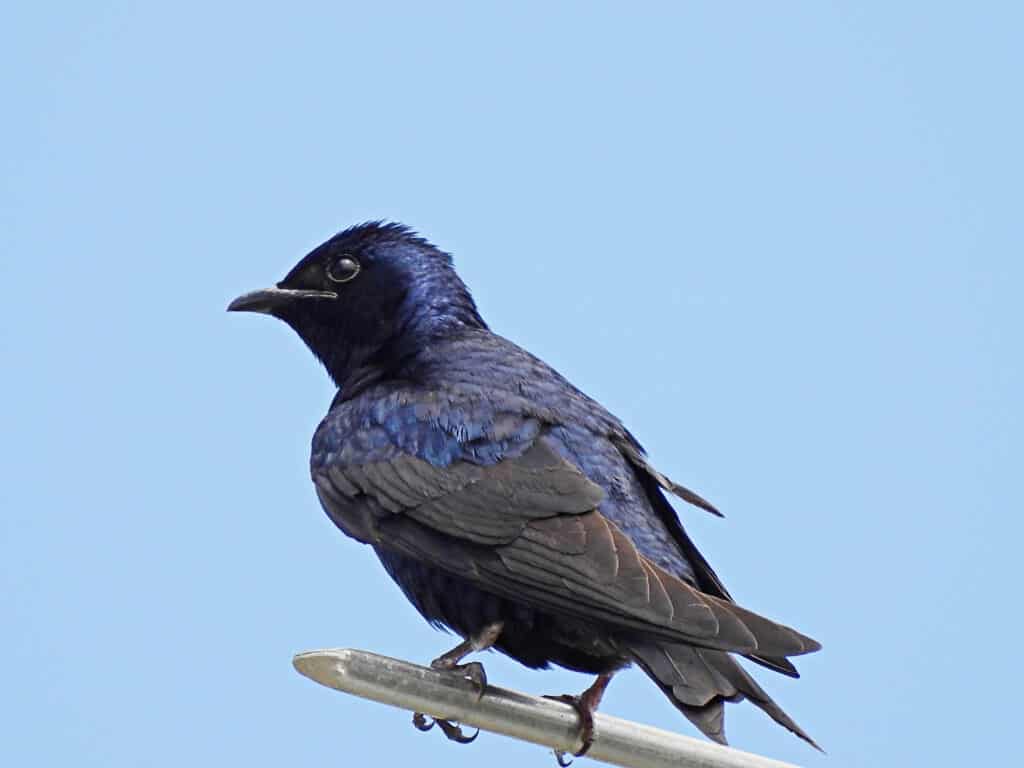
Provide high perches around your yard for purple martins to scan the area for food, or to look out for predators.
©iStock.com/passion4nature
Purple martins like to have a safe vantage point up high to scan for predators, look for food, or take a rest. A few scattered open perches will work, or you can purchase a perch kit to install at the top of your nesting box. Purple martin perches should be thin and narrow so that large predator birds can’t use them.
4. Add a Decoy Bird to Your Houses

A decoy bird perched on a house will lure purple martins to check out the nesting boxes.
©William A. Morgan/Shutterstock.com
These are social birds, and they will be attracted to your birdhouse when they spot another of their species. They also don’t want to be the first to settle in a new nesting box. If they spot a decoy, they are more likely to swoop down to check out the home. The decoys can also distract predators, giving the purple martins a chance to flee.
5. Play Recordings of Purple Martin Songs in Your Yard
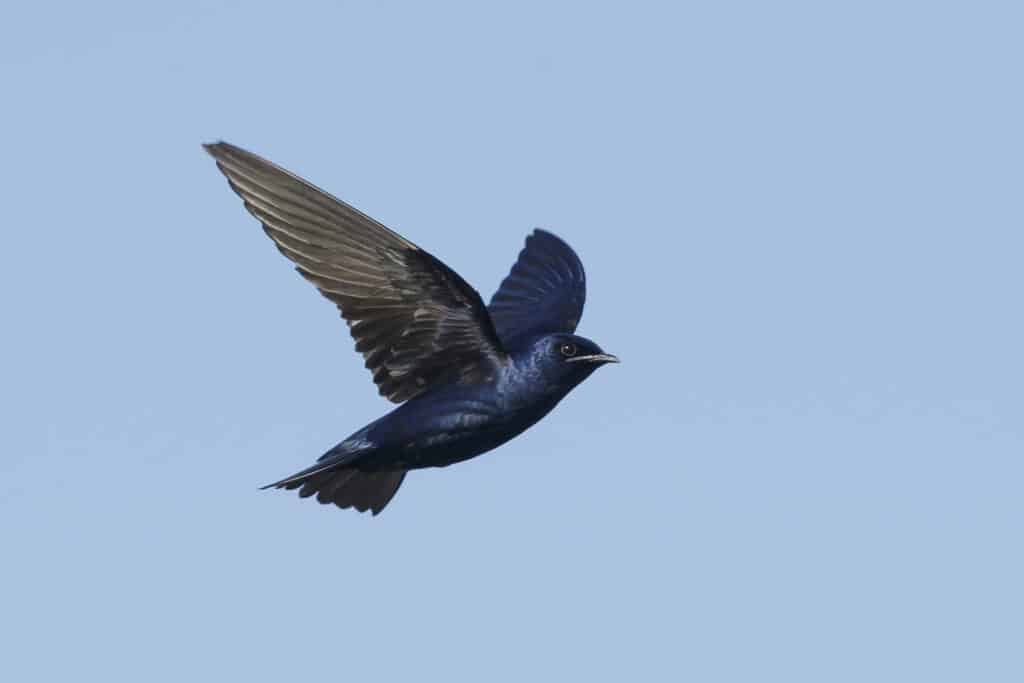
Purple martins will be attracted to a yard if they believe there are others of their kind nearby.
©iStock.com/AGAMI stock
Just like the decoy, if a passing purple martin hears others of their kind, they’ll be more likely to stop and check out your yard. You can combine the recording with the decoy bird to create an illusion of a nesting colony in your yard.
6. Deter Other Bird Species and Predators

Snakes will climb the pole of the purple martin’s nesting box and eat the eggs and the hatchlings.
©Jay Ondreicka/Shutterstock.com
Predator guards on the pole of your nesting box will keep squirrels, raccoons, and snakes from attacking the birds in their homes. Sparrows and starlings can be attracted to purple martin houses. You can deter them from nesting in the boxes by keeping the houses closed until it’s time for the purple martins to arrive in your area. Many purple martin nesting boxes are sold with doors you can keep closed until you begin to see purple martins arriving. Or you can place plastic cups over the entrance holes to prevent sparrows or starlings from nesting before the purple martins have a chance to arrive.
7. Provide Finely Crushed Eggshells
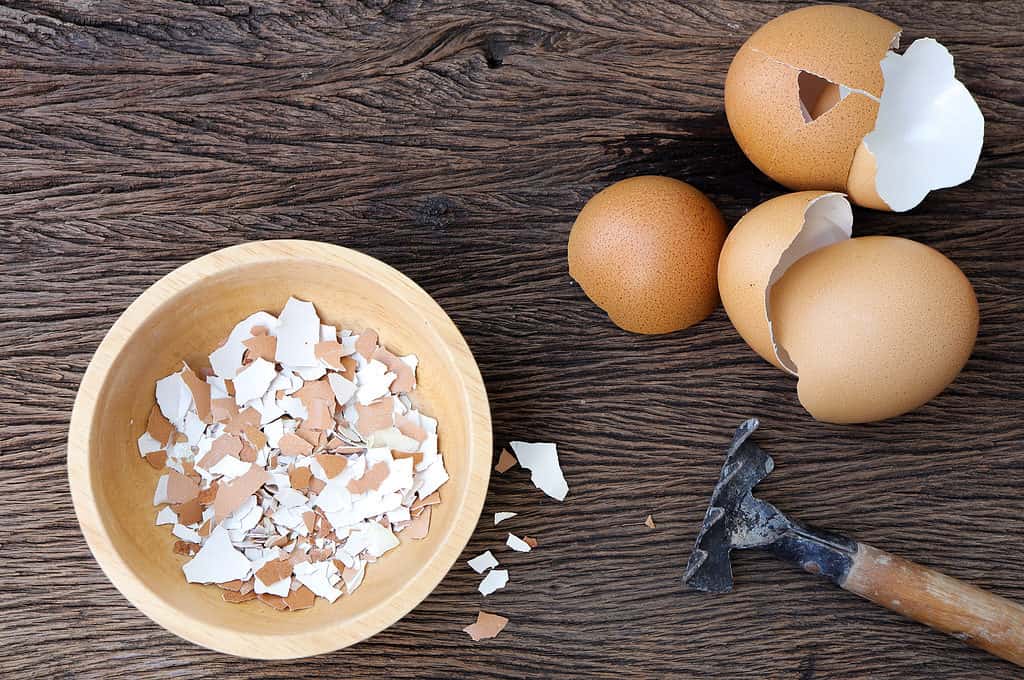
Crushed eggshells can be a calcium supplement for nesting purple martins.
©iStock.com/yuphayao phankhamkerd
Purple martins won’t eat bird seed and don’t need you to keep a bird feeder. However, if you place some finely crushed eggshells around, they will eat them to get extra calcium during their nesting season.
8. Avoid Pesticides
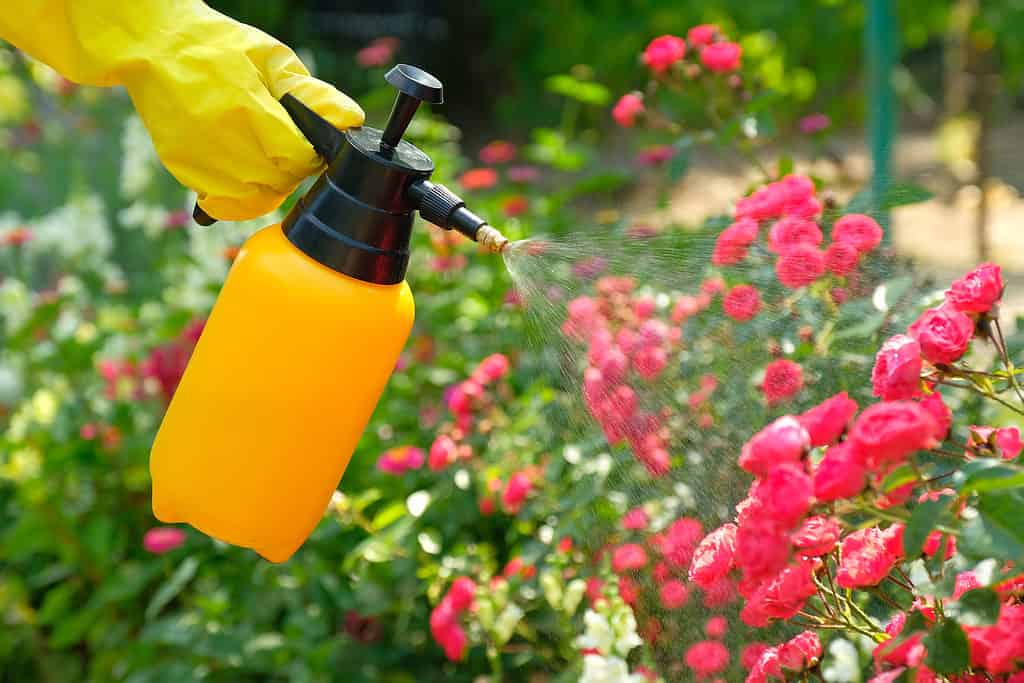
Purple martins offer a natural pest control method.
©Savanevich Viktar/Shutterstock.com
Purple martins are on the hunt for insects. If you keep your yard free of pests, there won’t be food for the birds. The purple martins will become your natural pest control, without the need for chemicals or poison.
9. Offer Nesting Materials
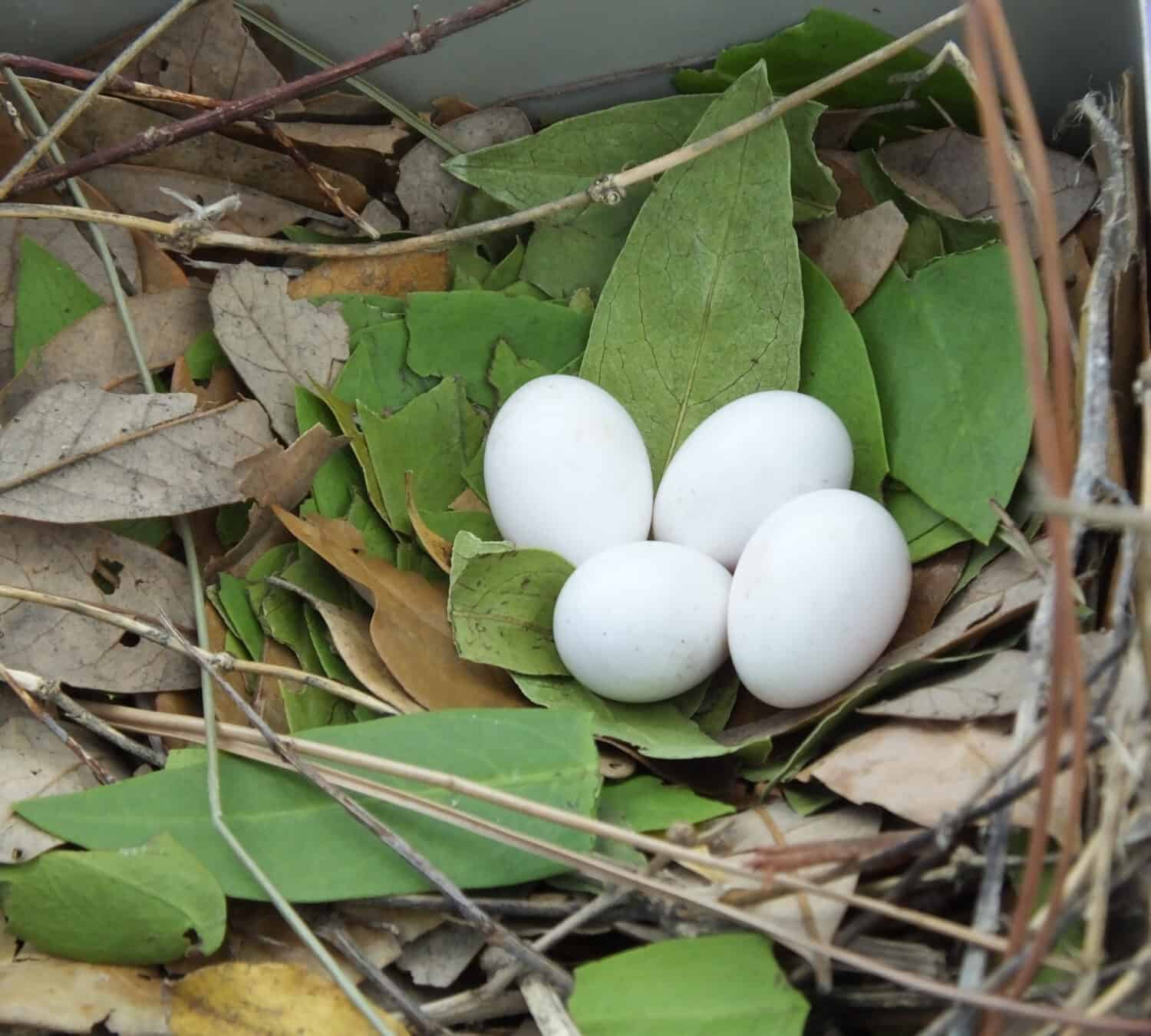
Purple martins use leaves, twigs, and grass clippings for their nest.
©passion4nature/Shutterstock.com
Finally, you can attract purple martins to your yard and encourage them to move into your nesting boxes by providing the type of nesting materials they like to use. Purple martins will make their nests from twigs, grass clippings, and leaves. By leaving these materials lying around, you can help attract purple martins to your yard. Additionally, the birds will use mud to bind the materials together, so it wouldn’t hurt to have muddy areas nearby.
Summary of 9 Effective Methods for Attracting Purple Martins to Your Yard
| Number | Method |
|---|---|
| 1 | Provide a purple martin nest box. |
| 2 | Install the nest box correctly. |
| 3 | Add open perches around the yard. |
| 4 | Add a decoy purple martin bird to the nest box. |
| 5 | Play recordings of purple martin songs. |
| 6 | Deter other bird species and predators. |
| 7 | Provide finely crushed eggshells. |
| 8 | Avoid pesticides. |
| 9 | Offer nesting materials. |
The photo featured at the top of this post is © iStock.com/KennShapiro
Thank you for reading! Have some feedback for us? Contact the AZ Animals editorial team.







